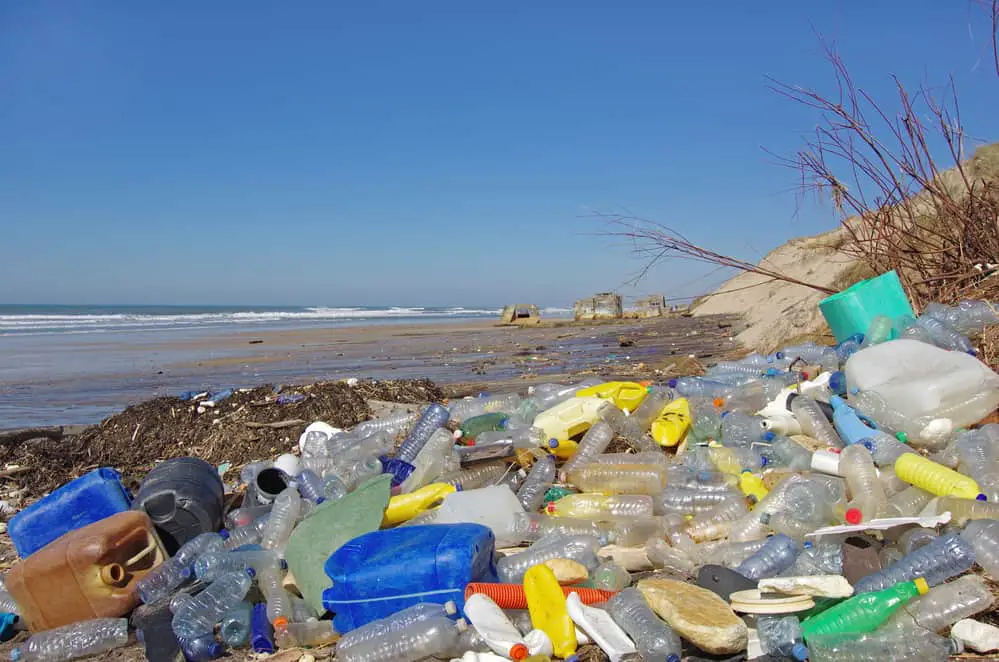 Plastic is literally everywhere on our planet. It has become a vital part of our lives, which are mostly driven by convenience. However, that convenience comes at a price. Thanks to its resiliency, nearly every piece of plastic ever made still exists today. A very significant amount of it is thrown away and ends up in landfills, and sadly in the ocean. It is estimated that there are some five trillion pieces of plastic in the world’s oceans. By 2050, it is predicted that there will be more plastic, by weight, in the ocean than fish. Every year, around 8 million tons of plastic finds its way to the sea. In the U.S. alone, nearly 2.5 million plastic bottles are used every hour.
Plastic is literally everywhere on our planet. It has become a vital part of our lives, which are mostly driven by convenience. However, that convenience comes at a price. Thanks to its resiliency, nearly every piece of plastic ever made still exists today. A very significant amount of it is thrown away and ends up in landfills, and sadly in the ocean. It is estimated that there are some five trillion pieces of plastic in the world’s oceans. By 2050, it is predicted that there will be more plastic, by weight, in the ocean than fish. Every year, around 8 million tons of plastic finds its way to the sea. In the U.S. alone, nearly 2.5 million plastic bottles are used every hour.
It gets worse from there. All this plastic ends up swirling around in the ocean creating immensely large trash islands. One of the world’s largest is known as the Great Pacific Garbage Patch. While it’s difficult to get an actual size measurement, some estimates have it equal to the size of Texas, roughly 700,000 square kilometers. This area has one of the highest levels of plastic particulate caused by plastic degradation. Essentially, the plastic degrades and disintegrates into pieces so small that it becomes small enough to be ingested by aquatic organisms. It then becomes part of the food chain. There is actually growing evidence that fish may prefer eating plastic to food. There is also evidence that plastic is harmful to humans. Plastic’s main ingredient, styrene, is most likely a human carcinogen. There’s no evidence just yet that says the plastic that we eat in fish directly affects human health, but it is certainly getting there.
Some of these plastic particles end up in the stomachs of marine animals like albatrosses and sea turtles. Many of the former lose approximately 1/3 of their chicks. Many of them die due to their eating plastic that is fed to them, when it is mistaken as food by their parents. It is estimated that every year, nearly five tons of debris gets fed to albatross chicks. Microscopic debris can also be eaten by jellyfish, which are then eaten by fish. It is a deathly cycle that doesn’t show signs of stopping anytime soon.
With a life span of over 500 years, plastic isn’t going anywhere. In America, 50% of what gets put into the plastic recycling bin never gets recycled. It basically gets sorted and thrown out. And it won’t get better until it is federally mandated that every state should have a deposit system. Out of all the countries in the world, there are several that lead the way when it comes to plastic pollution. They include the Philippines, Vietnam, Sri Lanka, Indonesia, and China. The one thing that would help these countries is to stop the use of disposable products. Other solutions have included the use of floating Oceanscrapers, made from the plastic found in the Great Pacific Garbage Patch.
All of this garbage that is out there floating in the oceans and killing animals and fish is an issue that should be on the front pages of media outlets everywhere. If we don’t pay attention to the canary in the coalmine, it could become a situation that is irreversible. As humans on this planet, we all need to unite on this issue so that future generations of humans and animals do not suffer dire consequences of our wasteful ways.


I have read that by 2025 the landfills in New England will be maxed out, and year 2036 for other parts of the country. Recycling plastic bags of all sorts is difficult. The stores do take back their thin bags but are not set up to take back thicker ones that hold toilet paper or perhaps wood chips for lawns. Please advise.